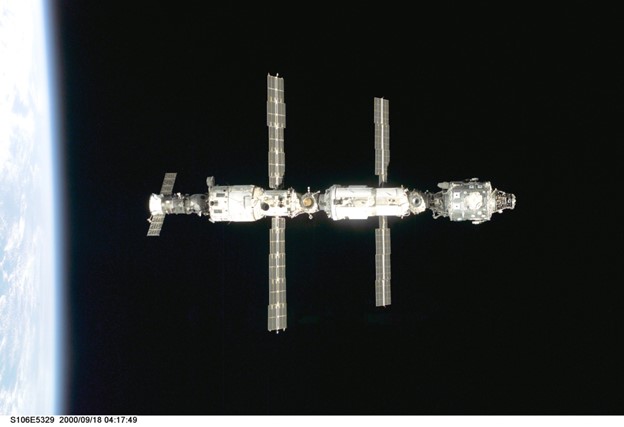Twenty seconds before the scheduled liftoff in March, Russia aborted its launch of three astronauts to the International Space Station (ISS). Putin’s space program continues to suffer from a number of challenges. For over a decade the Russian program has endured turbulence, funding constraints, a shrinking workforce, and low workforce productivity. The March incident was reported as “…a significant mishap for the Russian space program.” This week a newly-released Foreign Policy Research Institute (FPRI) report examines the Russian government space program in light of President Putin’s announcement that he intends to put a new space station into orbit by 2027.
It may be a challenge beyond what Putin can effectively deliver as Russia is suffering from monetary inflation in the aerospace industry, as well as a devaluation of the ruble. For Putin, however, the military space program is an “at any cost” venture for him. The current environment, according to the FPRI report, notes that there is not only a deficit of financial resources but also limited access to advanced machine tools and space-grade electronics. “These challenges for Russia to focus efforts on the military space activity and leave manned spaceflights and space exploration only to maintain its international status as a space superpower and sense of domestic legitimacy of authoritarian governance without any sustainable outcomes of the civil space activity itself,” says the report.
Wester military analysts are growing more concerned as Russia’s military space program is increasingly asymmetrical. It currently depends on a large number of inexpensive satellites composed of consumer and industrial-grade imported electronic components, and notes, FPRI, “technologies of nuclear power to increase its counter-satellite electronic warfare capabilities.” These satellites have relatively short lives, increasing Russia’s constraints on developing a modern, comprehensive system. This is growing more pronounced since Putin’s 2014 annexation of Crimea and Russia’s invasion of Ukraine. Economic sanctions take time to work. Putin’s space program is experiencing a dearth of components due to the embargo on advanced industrial equipment, limited finances spread across too many major projects, and the general Russian inefficiency within the space industry. Added to the domestic economic challenges, the cancellation of space cooperation with Western partners has made it impossible for Putin to reverse the negative trends.
Russia’s two main priorities for the next decade are to maintain the presence of its astronauts in outer space after the ISS era and even if it is unable to proceed with scientific research and discoveries. Second, according to FPRI, is that Russia must move satellite manufacturing from space-grade electronics to “relatively simple and cheap consumer-grade electronics.” This would be one option for Putin given the preference for quantity over quality. Russia could then afford to quickly replace its short-lived satellites and at the same time develop more advanced communications and intelligence capabilities to support the armed force.
Russia’s Global Navigation Satellite System (GLONASS) is also at risk since the development of new architecture with fewer resources in the sky may make it impossible for Putin to achieve his goal of covering Russia and its neighboring territories. The FPRI report suggest that the armed forces already use consumer-grade GPS and BeiDou trackers, so avoiding the deterioration of GLONASS may not be a top priority. By 2026 Moscow plans to transfer additional federal project funds that are not targeted for other projects to space activities.
The Russian state space program has two subprograms to improve management of its space endeavors. Putin’s first priority is innovation projects within the space industry, and second, is to ensure implementation of “space activity.” The latter is inclusive of its military program and includes development of the Plesetsk launch site for military orbital launches. Cuts in funding since 2020 indicate that Putin will be unable to achieve his objectives by 2030, despite the lengthening of project timelines. Originally planned and approved as a $50 billion effort, less than $26 billion in funding has actually been allocated to the space program. This critical underfunding, taken together with other constraints such as the country’s high military casualty rate, may provide the West with the leeway needed to press Russia further to end the war in Ukraine. It may also make Putin a more dangerous opponent of the West should he feel cornered without options.
Daria Novak served in the U.S. State Dept.
Photo: Photo: Backdropped against black space above Earth’s horizon, the International Space Station’s (from left) Zvezda service module, Zarya module, and Unity module are pictured following the undocking of Space Shuttle Atlantis on Sept. 18, 2000, during the STS-106 mission. (NASA)
